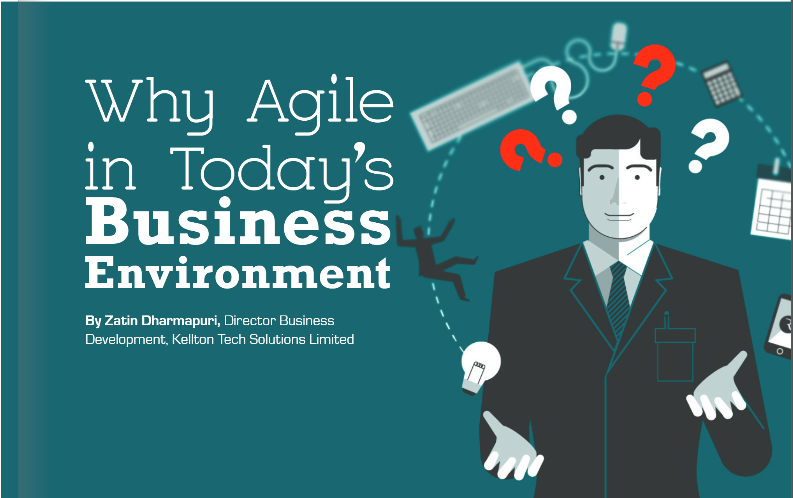Other recent blogs



Let's talk
Reach out, we'd love to hear from you!
We know how change is an integral part of any aspect of life and it’s no different to consider businesses under this ambit. Change has always been a constant feature of most global business industries and specifically IT-enabled businesses. However, the notable difference of today’s changes, when compared to say a decade back, is the criticality and its impact on deciding the future of a business. Hence, it is natural for IT services and teams to enable themselves with ever-changing technology advancements to ensure providing adequate and profitable services to not only support the change but do it in an efficient and profitable way. To this effect, many IT service companies and in-house IT teams have started to lean more towards adopting Agile Development Methodologies than ever before.

To better understand why Agile is sought after; let me highlight a few key business scenarios that I see as a reason for growing usage of Agile methodology.
- Go-to-Market Strategy has become one of the key ingredients for a business to ensure success. A business has to address the end-users’ requirements in a short span of time. This helps it for better market penetration of its products/services, which in turn leads to increased reliability and trust factor among users and helps the business increase its brand value.
- Competitive Advantage in today’s business environment is short-lived due to low barriers to entry and the rapid advancement of technology. To maintain a competitive edge, businesses need to keep improvising their services and that too as quickly as possible.
- Disruptive Market Strategy is another approach businesses are looking at widely of late, which I feel is due to the constant new service demands of end-users from the products/services they use. Additionally, rapid technological advancement has set off companies in inculcating these into their business and become the front runner in capturing the target markets.
There is an obvious change in business trends of today, as highlighted above. One can easily see how the market environment is vastly different as compared to 5 years ago or maybe to unrealistically stretch, a decade back. Previously, the majority of businesses used the rapidly declining popularity of waterfall framework, which was comfortably interacting between the then market trends and the business requirements. However, businesses gradually witnessed the shortcomings of waterfall framework as compared to the present business scenario and how new business entrants are capitulating the market by adopting the agile framework. The established large businesses, I’m afraid, have realized the need to change their project executions a little late. But, a counterbalancing factor for such businesses is their brand value among its user base, which will give them high chances of staying competitive provided they start trending towards an Agile framework.
Agile fits right for today’s market trends and I strongly feel this has started resonating among most of the established and new businesses across the globe. Some of the highlights of an Agile framework are as follows;
- Quick turnaround time of catering to the current market demands by following the incremental model or Rapid and short development cycles.
- Small elements of the useable application are developed, thereby contributing to the full application when put altogether after an agreed timeline.
- This approach helps in ensuring robust testing for any faults (bugs) and fixing them immediately.
- Quick inclusion of user feedback or new feature demands
To conclude with my inclination towards Agile methodology, I would say that the businesses, which are yet to adopt Agile should quickly move over to it before losing the market advantage to the competition. I believe, if not all, a majority of projects can be accommodated into an Agile framework with some that can be customized as required.
This article was published in the September 2017, CIO Review (Pg 31).



